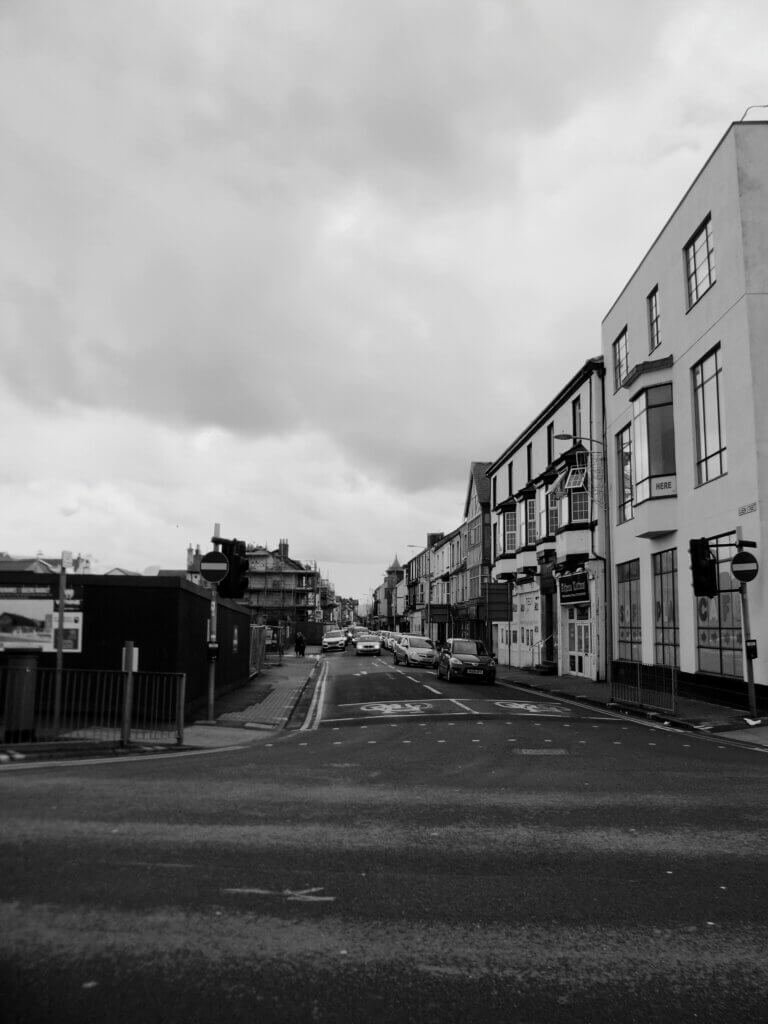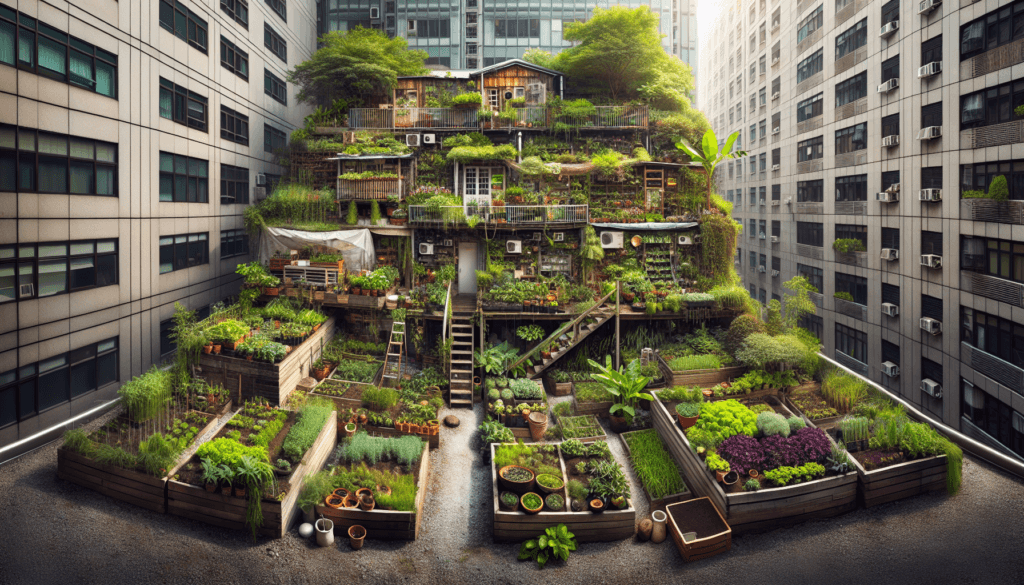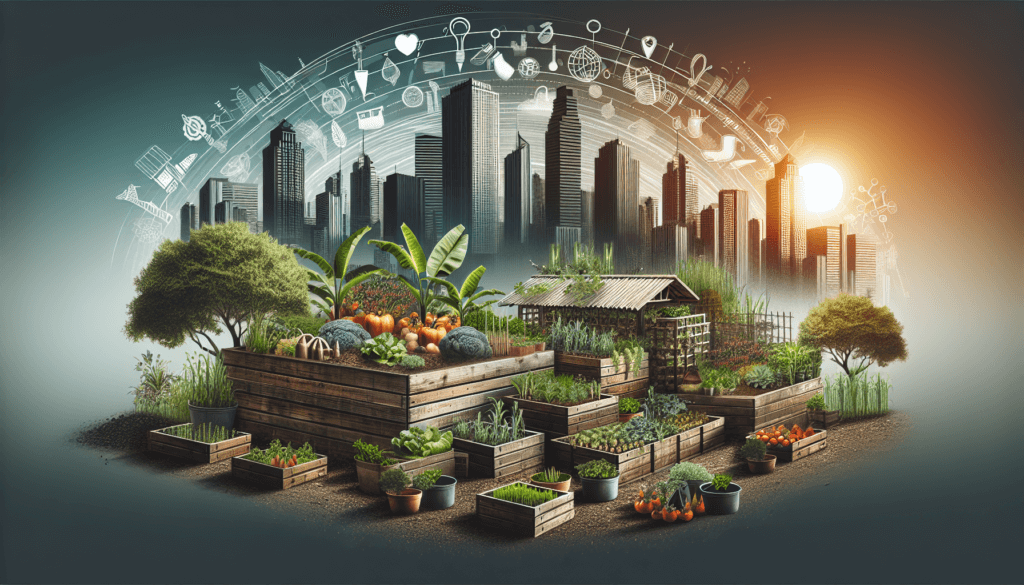Imagine transforming your urban space into a thriving garden filled with vibrant plants and fresh vegetables. With a few simple steps, you can create a raised bed garden that not only adds beauty to your surroundings but also provides you with a bountiful harvest. Whether you have a small balcony or a tiny backyard, this article will guide you through the process of building a raised bed garden in your urban oasis. Get ready to embark on a rewarding journey of greening your space and connecting with nature right at your doorstep.
Choosing the Right Location
Assessing sunlight exposure
When choosing the location for your raised bed garden, it is important to assess the amount of sunlight it will receive throughout the day. Most vegetables and flowers require at least 6 hours of direct sunlight to flourish. Observe the area at different times of the day to determine how much sunlight it receives. Identifying a spot with ample sunlight will ensure that your plants grow healthy and produce bountiful harvests.
Considering proximity to water source
Another crucial factor to consider when selecting the location for your raised bed garden is its proximity to a water source. Watering is essential for the growth and development of plants, and having easy access to water will save you time and effort. Consider placing your raised bed garden near a water faucet or a rain barrel for convenient irrigation.
Evaluating accessibility
In an urban space, it is important to consider the accessibility of your raised bed garden. Choose a location that is easily accessible to you, as well as other members of your household. This will make it easier to tend to your garden, harvest crops, and carry out maintenance tasks. Additionally, consider accessibility for individuals with mobility issues to ensure that everyone can enjoy the benefits of urban gardening.
Selecting the Suitable Design and Materials
Determining the size and shape of the bed
Before building your raised bed garden, it is crucial to determine the size and shape that best suits your needs. Consider the available space in your urban area and the plants you intend to grow. If you have limited space, rectangular beds are a popular choice as they maximize the growing area. However, if you have more space, you may choose unconventional shapes or even multiple beds. Take into account your gardening goals and the aesthetic appeal you desire.
Choosing the construction materials
When it comes to constructing your raised bed garden, there are various materials to choose from. Popular options include wood, bricks, concrete blocks, and galvanized metal. Each material has its advantages and considerations. Wood is a common choice due to its affordability, versatility, and natural look. Bricks and concrete blocks offer durability and can create a more permanent structure. Galvanized metal provides a sleek, modern look but may require additional insulation. Consider your budget, desired aesthetic, and longevity when selecting the construction materials for your raised bed garden.
Considering drainage options
Proper drainage is crucial for the health of your raised bed garden. Excess water can lead to root rot and other problems. When building your raised bed, consider incorporating drainage options such as drainage holes or gravel at the bottom. This will help prevent water from pooling and ensure that your plants receive the right amount of water they need to thrive.

Preparing the Area
Clearing the designated spot
Before building your raised bed garden, it is essential to clear the designated spot of any obstructions. This includes removing rocks, debris, and any other items that may hinder the construction process. Clearing the area will also provide a clean canvas for your garden, allowing your plants to grow without competition from unwanted vegetation.
Removing grass and weeds
To ensure optimal growing conditions for your raised bed garden, it is important to remove any existing grass and weeds. These unwanted plants can compete with your crops for nutrients and water. Use a shovel, hoe, or manual weed removal tools to eliminate them from the designated spot. It may be helpful to apply a layer of cardboard or landscape fabric before adding soil to further prevent weed growth.
Leveling the ground
Once the area is cleared and free of grass and weeds, it is important to level the ground. Uneven ground can lead to water pooling in certain areas of your raised bed, potentially causing drainage issues. Use a rake or shovel to level the ground and ensure a smooth surface for your raised bed garden.
Building the Raised Bed
Creating the base structure
To build the base structure of your raised bed garden, start by assembling the bottom frame. This can be done by attaching the longer boards or bricks together to form a rectangle or desired shape. Make sure the corners are secure and the frame is sturdy. Place the base frame in the designated spot and ensure it is level.
Constructing the walls
Once the base frame is in place, it is time to construct the walls of your raised bed garden. Attach the shorter boards or bricks to the base frame, forming the walls of the bed. Ensure that the walls are securely attached to the base frame to create a sturdy structure. Consider the height of the walls based on your gardening needs and preferences.
Securing the corners
To reinforce the corners and ensure the stability of your raised bed garden, use corner brackets or L-brackets. Attach these brackets to the inside of the corners, securing the walls and base frame together. This will prevent the walls from shifting or bowing over time, providing long-lasting support for your garden.

Optimizing Soil for Raised Beds
Testing the existing soil
Before adding soil to your raised bed garden, it is beneficial to test the quality of the existing soil. This can be done using a soil testing kit or by sending a sample to a local agricultural extension office. Testing the soil will provide valuable information on its pH level, nutrient content, and any necessary amendments.
Amending the soil with organic matter
To optimize the soil in your raised bed garden, it is important to amend it with organic matter. This can include compost, aged manure, peat moss, or a mixture of these. Organic matter improves soil structure, promotes nutrient retention, and enhances water drainage. Mix the organic matter thoroughly with the existing soil to create a nutrient-rich growing medium.
Ensuring proper soil depth
Raised beds require a sufficient depth of soil to accommodate the root systems of your plants. Aim for a soil depth of at least 12 inches, but deeper if possible. This will provide ample room for the roots to grow and access essential nutrients. The deep soil will also retain moisture better, reducing the frequency of watering.
Irrigation and Watering Techniques
Installing a drip irrigation system
A drip irrigation system is a convenient and efficient way to water your raised bed garden. It delivers water directly to the roots of your plants, minimizing water waste through evaporation or runoff. Install a drip irrigation system by connecting a timer, pipes, and drip emitters to your water source. Adjust the flow rate and timing based on the water needs of your plants.
Using a soaker hose
If a drip irrigation system is not feasible, using a soaker hose is a suitable alternative. A soaker hose is a porous tube that releases water slowly and evenly along its entire length. Lay the soaker hose throughout your raised bed garden, ensuring it is positioned near the root zone of your plants. Turn on the water at a low pressure, allowing the hose to gradually soak the soil.
Implementing efficient watering practices
Regardless of the irrigation method you choose, it is important to implement efficient watering practices. Watering in the morning or evening when temperatures are cooler reduces water loss due to evaporation. Water your plants deeply but less frequently to encourage root growth. Check the soil moisture regularly to ensure it remains consistently moist but not waterlogged. Adjust the watering schedule based on weather conditions and the specific needs of your plants.

Choosing the Right Plants
Considering sunlight requirements of different plants
When selecting plants for your raised bed garden, it is crucial to consider their sunlight requirements. Some plants thrive in full sun, while others prefer partial shade. Make note of the sunlight patterns in your garden area and choose plants accordingly. Group plants with similar sunlight needs together to optimize their growth and ensure they receive the appropriate sunlight exposure.
Determining the appropriate plant spacing
Proper plant spacing is important for optimal growth and yield in your raised bed garden. Each plant requires a certain amount of space to grow and access necessary nutrients. Refer to seed packets or gardening resources to determine the recommended plant spacing for each crop. Overcrowding can lead to poor air circulation, increased disease risk, and stunted growth. Follow the guidelines for plant spacing to maximize your garden’s productivity.
Selecting suitable varieties for urban gardening
When selecting plants for your raised bed garden in an urban environment, consider choosing varieties that are well-suited to urban gardening conditions. Look for plants that are compact, suitable for container gardening, or have a shorter growing season. These varieties are often bred to thrive in smaller spaces and can handle the challenges of urban environments such as limited sunlight, pollution, and temperature fluctuations.
Planting and Maintaining the Garden
Planting seeds or seedlings
After preparing the soil and selecting the appropriate plants, it is time to plant your raised bed garden. Follow the instructions on seed packets or plant labels for proper planting depth and spacing. Create small holes in the soil, place seeds or seedlings into the holes, and cover them gently with soil. Water the newly planted area thoroughly to ensure good seed-to-soil contact and to help seeds germinate successfully.
Practicing proper watering techniques
Maintaining a consistent watering routine is crucial for the health of your plants. Water them immediately after planting and continue to monitor soil moisture levels. Water deeply, ensuring that the root zone is adequately hydrated. Be mindful not to overwater, as this can lead to root rot and other issues. Adjust your watering schedule as needed based on weather conditions and plant requirements.
Implementing regular maintenance tasks
To keep your raised bed garden thriving, it is important to implement regular maintenance tasks. These can include removing weeds, pruning plants, and monitoring for pests or diseases. Deadheading spent flowers, providing support structures for tall plants, and addressing any signs of nutrient deficiencies are also key tasks. Regular maintenance will prevent problems from escalating and help your garden reach its full potential.

Dealing with Pests and Diseases
Identifying common pests in urban gardens
Pests can pose a threat to your raised bed garden, but there are effective organic methods to deal with them. Identify common pests in urban gardens such as aphids, slugs, snails, and caterpillars. Regularly inspect your plants, particularly the undersides of leaves, for signs of infestation. Promptly address any pest issues to prevent damage to your crops.
Implementing organic pest control methods
When it comes to pest control in your urban garden, opt for organic methods to protect the environment and the health of your plants. These methods include handpicking pests, using insecticidal soaps, introducing beneficial insects, and practicing crop rotation. Creating a diverse and balanced ecosystem in your garden will naturally control pest populations and reduce the need for harmful chemical pesticides.
Recognizing signs of plant diseases
Plant diseases can occur in any garden, but early detection is key to preventing their spread. Familiarize yourself with common plant diseases such as powdery mildew, damping-off, and blight. Look for signs such as wilting, discoloration, spots, or unusual growth patterns. Promptly address any signs of disease by practicing good sanitation, removing affected plant parts, and using organic treatments if necessary.
Extending the Growing Season
Using row covers or cloches
To extend the growing season in your raised bed garden, consider using row covers or cloches. Row covers are lightweight fabrics that are placed directly over your plants, protecting them from cold temperatures and frost. Cloches, on the other hand, are individual protective covers placed over individual plants. Both methods create a microclimate around your plants, trapping heat and allowing you to start planting earlier in the spring or grow crops later into the fall.
Implementing a cold frame or greenhouse
For more extensive season extension, consider implementing a cold frame or greenhouse in your urban space. Cold frames are simple structures with a transparent lid that can be opened or closed to regulate temperature and humidity. Greenhouses provide even more control over environmental conditions, allowing you to grow plants year-round. Both options provide protection from extreme weather conditions, allowing you to enjoy fresh produce for an extended period.
Utilizing suitable plant varieties for season extension
When planning for season extension in your raised bed garden, select plant varieties that are suitable for cooler temperatures and shorter daylight hours. These varieties are often referred to as cold-hardy or frost-tolerant. Look for specific cultivars that are recommended for fall or winter gardening. By choosing the right plant varieties, you can maximize your garden’s productivity throughout the year.
In conclusion, building a raised bed garden in your urban space is an excellent way to enjoy the benefits of gardening while overcoming the challenges of limited space. By carefully selecting the right location, design, materials, and plants, and practicing proper maintenance, watering, and pest control techniques, you can create a thriving and productive garden in your urban environment. With a little planning and effort, you can enjoy fresh, homegrown produce and the joy of nurturing plants right at your doorstep. Happy gardening!



